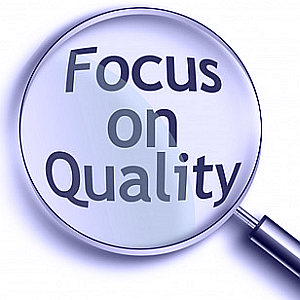Project Activities Planning and Scheduling
 Project time management includes two high-level groups of processes for planning and scheduling project activities and tasks necessary for timely completion of the project. Project activities planning and scheduling is the first process group of project time management. Developing the project implementation schedule is the second group. In this article we will review the planning and scheduling process group. We will talk about the key actions the project manager must take to undertake project activities planning and scheduling in an efficient manner.
Project time management includes two high-level groups of processes for planning and scheduling project activities and tasks necessary for timely completion of the project. Project activities planning and scheduling is the first process group of project time management. Developing the project implementation schedule is the second group. In this article we will review the planning and scheduling process group. We will talk about the key actions the project manager must take to undertake project activities planning and scheduling in an efficient manner.
To plan and schedule project activities and tasks the project manager needs to take the next four steps:
- Set up activities.
- Define relationships between activities.
- Estimate resources required for performing activities.
- Estimate durations for activities.
Step #1: Set up Activities
The first step of project activities planning and scheduling requires the project manager to define what amount of actions and tasks are necessary for producing project deliverables in a timely manner. The input for this process will be the project deliverables statement. The project manager can use this document to define high-level activities that will be used later in creating the project implementation schedule. The project manager should also work on developing project activities templates that help simplify the process of project scheduling and planning.
In cooperation with experts and the project team, the manager should make project activities lists that will be the output of the process for project activities planning and scheduling. For each of the listed activities accurate milestones should be identified and approved. All the identified milestones should be gathered into a single milestones list.
Step #2: Define Relationships
The next step for planning project activities and tasks requires the project manager to make a sequence of all the activities identified at the previous step. The manager will use project activities lists, the milestones list and the product scope statement to define relationships among the activities. With help of project management software that person can set up priorities for each of the project activities and make task sequences organized and sorted by importance and urgency.
There is also a need to define dependencies between the activities. Dependencies can be internal and external. Activities with internal dependencies refer to any actions that the project team will take to produce the deliverables within the existing working environment. Activities with external dependencies refer to non-project factors that define success of project-related activities.
Both types of activity dependencies should be identified and added to sequenced and prioritized activity lists. Once the relationships are defined, the project manager should update project activities templates, outline the dependencies and link them to the product scope statement.
Step #3: Estimate Resources
At this step, the project manager needs to review stakeholder requirements and the product scope statement to estimate an amount of resources required for performing project activities and tasks. Also expert judgments and alternatives analysis should be used for this purpose.
The constraint of time needs to be considered when estimating activity resources. The project manager in cooperation with experts and the team should develop resource calendars and define types of required resources. Once all this information is collected and analyzed, it should be used to make a decomposition of activity resources categorized by types, priorities and time. This decomposition is critical to creating the project implementation schedule.
Step #4: Estimate Durations
The final step in project activity planning and scheduling requires the project manager to define and estimate an amount of working time required for accomplishing each identified activity. This is about setting up durations for project activities and tasks. Durations will depend on 1) the amount of work effort and 2) available of activity resources.
The project manager should review the resource decomposition and project activities templates to estimate the number of work periods required for completing the identified activities and producing the deliverables. The output of this process is activity estimates that are linked to resource calendars. This information will be used later in developing the implementation schedule.
Summary
The four steps of project activity planning and scheduling are required to set up project activities and tasks, define activity relationships, estimate activity resources and measure activity durations. They make the foundation for creating a detailed schedule on implementing the project. Successful project time management is based on how well these steps are taken.














